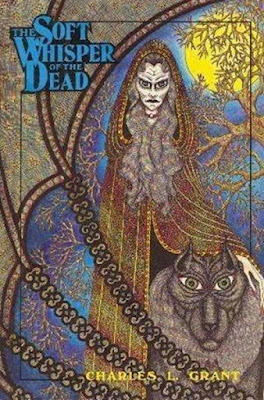Since today is Halloween, I want to post about a classic horror yarn that not all that many people are familiar with. But a lot of pulp fans are. I’m speaking, of course, of THE CURSE OF THE HARCOURTS by Chandler Whipple, a collection of six grisly, bone-chilling novelettes originally published in the Weird Menace pulp DIME MYSTERY MAGAZINE in 1935 that fit together to form one compelling narrative. These stories were reprinted several years ago by Altus Press in handsome trade paperback and e-book editions.
As John Pelan points out in his excellent
introduction, despite being published in DIME MYSTERY, these are not
traditional Weird Menace stories. They have historical settings,
blatantly supernatural plot elements, and a high degree of graphic
violence that isn’t explained away in the end by some logical
resolution. No, these are straight out, full speed, blood and thunder
horror yarns . . . which happens to be the kind I like best.
The first story, “The Son of Darkness”, appeared in the February 1935 issue of DIME MYSTERY. Set in Normandy, it tells of the visit of an Italian nobleman, Count Pirelli, to the castle of Baron d’Harcourt and his family in the year 1000 (approximately). The baron welcomes Pirelli and even throws a party to celebrate his visit, but when the count tries to seduce d’Harcourt’s daughter, the baron whips him, humiliates him, and throws him out. That causes Pirelli to curse d’Harcourt and all his family and vow to exterminate them from the face of the earth, no matter how long it takes. Since it turns out that Pirelli is in league with Satan and probably can’t be killed, that’s liable to take a while, but he gets a good start on his bloody vengeance in this story.
Two hundred years have passed by the time of “Curse of the Harcourts” from the March 1935 issue. The d’Harcourt family is now English, and the current head of the family, Sir Henry d’Harcourt is in charge of a castle on the border between England and Wales which is besieged by an army of Welsh rebels. Then the castle is infiltrated by Druid sorcerers bent on revenge against the family for disrespecting their gods, revenge that involves human sacrifice and a literal trip to Hell for Henry.
Two hundred years after that, in “Shadow of the Plague” (April 1935), the Harcourt family now lives in London during the time of the Black Plague, and the evil entity that has stalked them through time takes advantage of that deadly disease to further his vengeance.
By the time of “White Lady of Hell” (June 1935), the Harcourt family has shrunk to three—a brother and sister and their mother—and has been exiled to Florence because of political intrigue in England. More than a hundred years has passed since the previous story, but you can bet that the evil Pirelli, who was Florence originally and made his deal with the Devil there, will show up again, and so he does, with the Harcourt siblings barely surviving to carry on the line. Not with each other, mind you. These stories are pretty lurid, but they don’t go quite that far.
In “A Child for Satan”, which originally appeared in the September 1935 issue of DIME MYSTERY, we learn that there were Harcourts living in Salem at the time of the witch trials, because, well, sure, why not? This is the only story in the series with a female protagonist, a young woman who is married to a Harcourt and has an infant son with him. But the evil Count Pirelli wants the child for Satan and will resort to any evil means to get him. In some respects, despite the supernatural menace of the Count, this one does bear more of a resemblance to a typical Weird Menace yarn.
The series concludes with “The Last Harcourt” (October 1935), which takes place in the Berkshire Mountains of Massachusetts in 1932 and features the final showdown between the Harcourts and the satanic Count Pirelli. That showdown has a pretty epic feel to it, too, and then Whipple gives us a nice little twist in the ending.
I enjoyed this series, but I have to give it a qualified recommendation, that qualification being that if you want to read it for Halloween, start at the beginning of October and space out the stories over the entire month, rather than reading the whole thing in less than a week like I did. The sameness of the plots tends to weaken them, and the relentless parade of torture, misery, and death is just overwhelming. I think the series would be more effective with plenty of time between installments, the way the readers of DIME MYSTERY encountered it back in 1935. That said, if you’re a pulp fan, I really think you ought to read THE CURSE OF THE HARCOURTS, because I’ve never run across anything else exactly like it in the pulps. (The art on all those issues of DIME MYSTERY MAGAZINE is by Walter M. Baumhofer, by the way.)








































